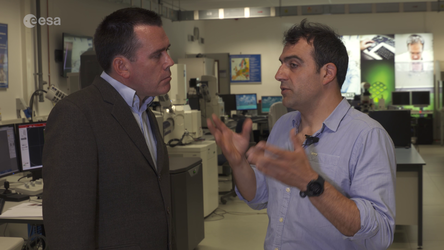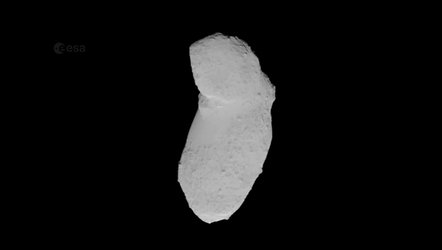

Grain from Japan’s Hayabusa spacecraft
Seen on a microscopic support, this sharp-edged grain of rock is an extraterrestrial object – a tiny sample from the Itokawa asteroid, retrieved by Japan’s Hayabusa mission and now being tested by ESA researchers.
Japan’s Hayabusa spacecraft was the world’s first mission to retrieve samples from the surface of an asteroid and return them to Earth. Beset by many problems, after a seven-year, six-billion-km odyssey Hayabusa returned around 1 500 precious asteroid grains to Earth.
Extremely precious, these Hayabusa grains have become the focus of scientific study around the world – and three of them are currently here, at ESA’s ESTEC technical centre in the Netherlands.
Researcher Fabrice Cipriani is leading research into their static charging properties, to understand the consequences for the surface environments of asteroids.
Watch this video interview with Fabrice produced for ESA’s Asteroid Day webcast.





